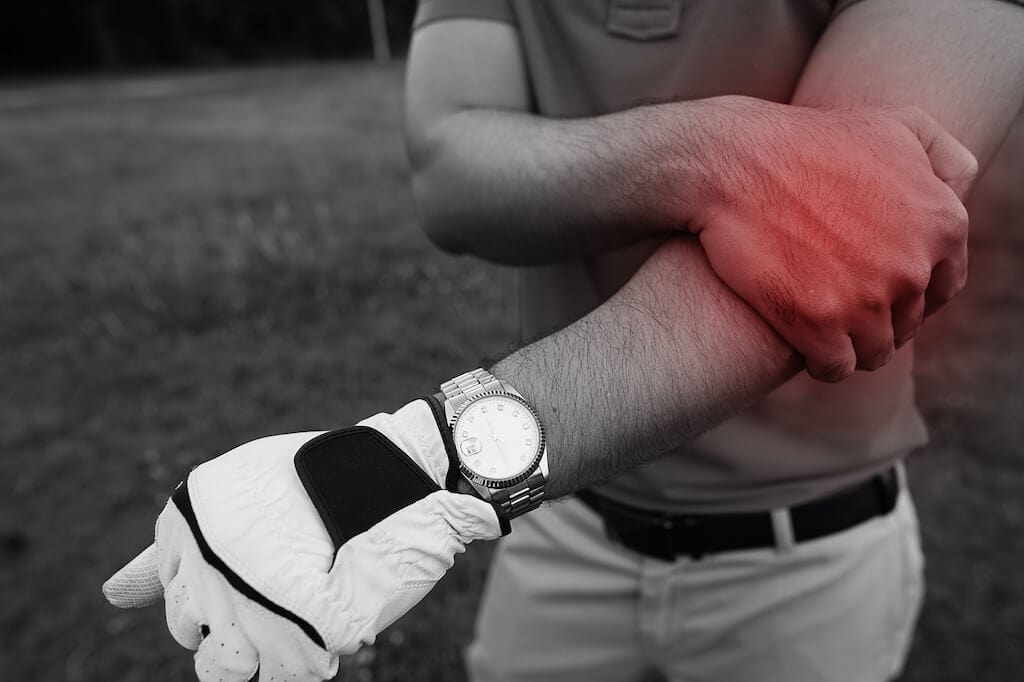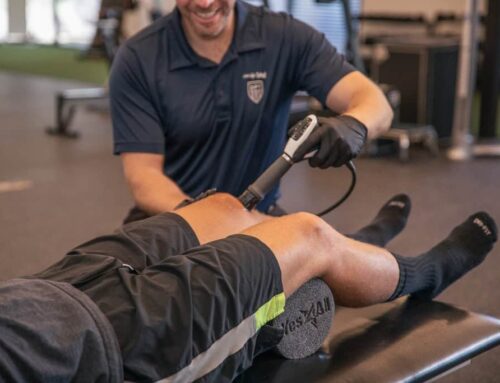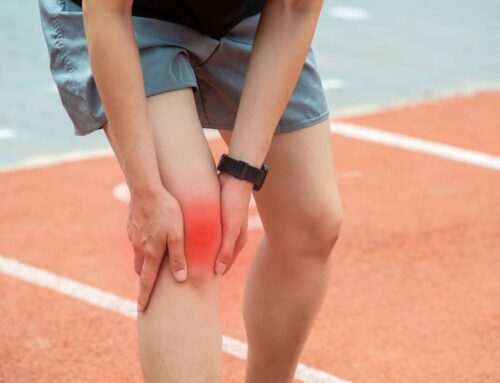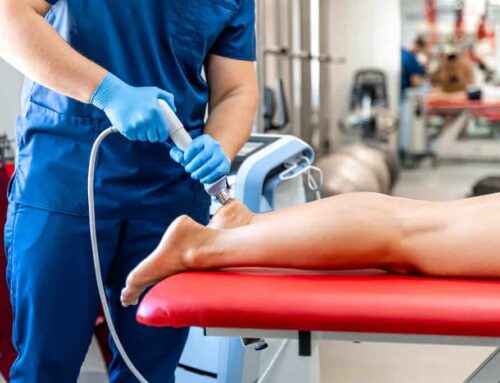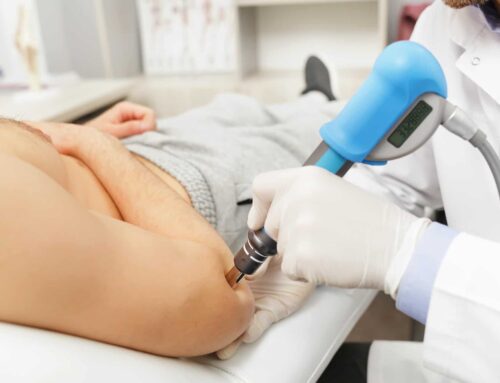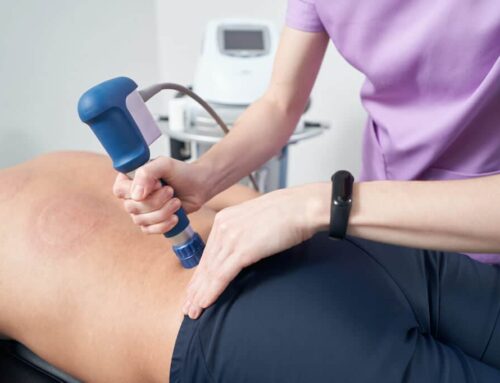Are you experiencing pain on the inner part of your elbow? Maybe you’re noticing that your pain becomes more noticeable during gripping or swinging motions with your arm? You might be dealing with golfer’s elbow, a common condition that affects many active people.
But what exactly is golfer’s elbow, and how can you beat it? In this article we’ll break down five key things to know about golfer’s elbow, what causes it, and how to get it under control for a more active lifestyle.
Let’s get started!
1) What is Golfer’s Elbow?
Golfer’s elbow, also called medial epicondylalgia, is a condition where the inner part of your elbow becomes irritated or painful. This often occurs when the tendons that attach to the bone of your inner elbow become overworked or inflamed.
Although golfer’s elbow typically isn’t a serious condition, it can be very difficult to live with while you have it. More importantly, it should be treated as early as possible to limit recurrence and long-term effects on your exercise or sports performance.
2) What are The Symptoms of Golfer’s Elbow?
While the symptoms of golfer’s elbow can vary from person to person, here are some of the most common symptoms to watch out for:
Pain on the inner portion of your elbow that is worse with gripping or bending your wrist downward.
Tenderness to pressure of your inner elbow, either on or around the bony bump immediately next to your elbow joint.
Redness, swelling, or tingling at your inner elbow.
For most people, the symptoms of golfer’s elbow get worse with sports or exercise that use your elbow and better with rest. However, symptoms can still be present at rest, especially if your elbow has been irritated by exercise or other activities.
3) What Causes Golfer’s Elbow?
Although golfer’s elbow can happen to anyone, it’s far more common in athletes and people who exercise regularly. In addition to golf, here are a few other activities where golfer’s elbow is more likely to happen:
Racquet sports, such as tennis or badminton. During these activities, constant gripping of the racquet and flexing (bending) of the wrist can lead to overuse of the tendons at your inner elbow.
Throwing sports, such as baseball or bowling. Similar to racket sports, overhead or underhand throwing requires forceful flexing of the wrist and can lead to increased stress on the tendons of your elbow.
Weight training exercises. Although not all weight training exercises can contribute to golfer’s elbow, upper body exercises that involve heavy gripping or bending of the wrist can cause similar problems to other sports. This is especially true for curling exercises that involve bending at your elbow or wrist, such as biceps curls or wrist curls.
If you’re experiencing golfer’s elbow but don’t do any of these activities, don’t be alarmed. Golfer’s elbow can happen to just about anyone when the tendons of your elbow become overstressed and aren’t able to recover. But what really causes golfer’s elbow?
4) The Root Cause of Golfer’s Elbow
One of the most important things to remember with golfer’s elbow is that elbow pain is really just a symptom of a root cause. So, while a lot of popular treatments for golfer’s elbow focus on treating the symptoms (minimizing elbow pain), this often only leads to short-term relief.
To get long-term relief, you’ll have to address the root cause of your elbow pain. More often than not, golfer’s elbow actually starts at your shoulder. Here are a few common causes we typically see:
Rotator cuff weakness. Your rotator cuff is a group of muscles and tendons that provide stability and control to your shoulder joint. When one or more of these muscles becomes weak, it can lead to compensations such as over-gripping during sports and exercise.
Scapular instability. Similar to rotator cuff weakness, weakness or poor coordination of the muscles supporting your scapula (shoulder blade) can also contribute to over-gripping and increased stress on your elbow during activity.
Core weakness. Your core is essentially a group of muscles around your abdomen that help to protect your spine and contribute to many different movements in your body. Although you may not think of your core and elbow as connected, weakness in your core can lead to changes in your movement mechanics that cause more stress on your elbow.
Of course, golfer’s elbow can also develop from a combination of root causes above and below the elbow joint that need to be identified and addressed properly to get long-lasting results. But where should you start?
5) Treatment of Golfer’s Elbow
To get the best results possible for your golfer’s elbow, it’s important to use a strategy that treats your symptoms and the root causes of your elbow dysfunction simultaneously.
Treating the Symptoms of Golfer’s Elbow
To help get your symptoms of inner elbow pain under control, it’s important to start by modifying the way you’re performing your activities to limit the amount of discomfort in your elbow. For example, a golfer could modify their activities by adjusting their swing, changing their club, or golfing shorter distances.
In addition to modifying how you’re performing your activities, you can also reduce pain with regular use of ice packs, over-the-counter medications for inflammation (such as Ibuprofen), and rest as needed.
To help the tendons of your elbow recover and build up tolerance for stress, you can perform eccentric exercises for your wrist. To do this, sit with your forearm supported, palm up, and wrist unsupported with a light weight in your hand. Slowly lower the weight for 3-5 seconds, then curl your wrist up.
Another great option for getting symptoms under control is shockwave therapy, which is a specialized treatment that targets the injured or dysfunctional tendons of your elbow. This treatment helps control tendon irritation by stimulating cellular processes that enhance growth factor migration and your body’s natural healing cells to repair the problematic tissue of your elbow.
Treating the root cause of Golfer’s Elbow
Although treating symptoms will help you in the short term, lasting results come from addressing the root causes of your golfer’s elbow. To get the best results, it’s important to correctly identify what your root causes are before you start treating them.
As mentioned earlier, some common root causes of golfer’s elbow include rotator cuff weakness, scapular instability, and core weakness. To help address these problems, there are two main strategies you can follow:
Strengthening: When the muscles of your rotator cuff, upper back, or core are weak, one of the best approaches is to strengthen them with exercise. With the right exercises and resistance for your specific needs, even the weakest muscles can gradually become stronger and help take stress off of your elbow.
Movement Training: Even when the right muscles are being strengthened, elbow stress can still be the result of movement patterns in your everyday life. With the help of an expert, you can modify problematic movement patterns via movement training and help prevent elbow stress long term.
Some common examples of movement training include things like modifying your racquet swing, improving your exercise form, and even changing your desk setup.
How Can Working with an Expert at DPT Help Me Recover From Golfer’s Elbow Faster?
At The Doctors of Physical Therapy, all of our experts specialize in identifying and treating root causes to help you get symptom relief and lasting results simultaneously. This means that not only can you finally get your pain under control, but you can get back to doing what you love faster.
With the help of regenerative medicine technology and state-of-the-art movement analysis techniques, you can enjoy faster results with your symptoms and their underlying causes for a more simple, streamlined, and enjoyable recovery experience that helps you perform your best day after day.


